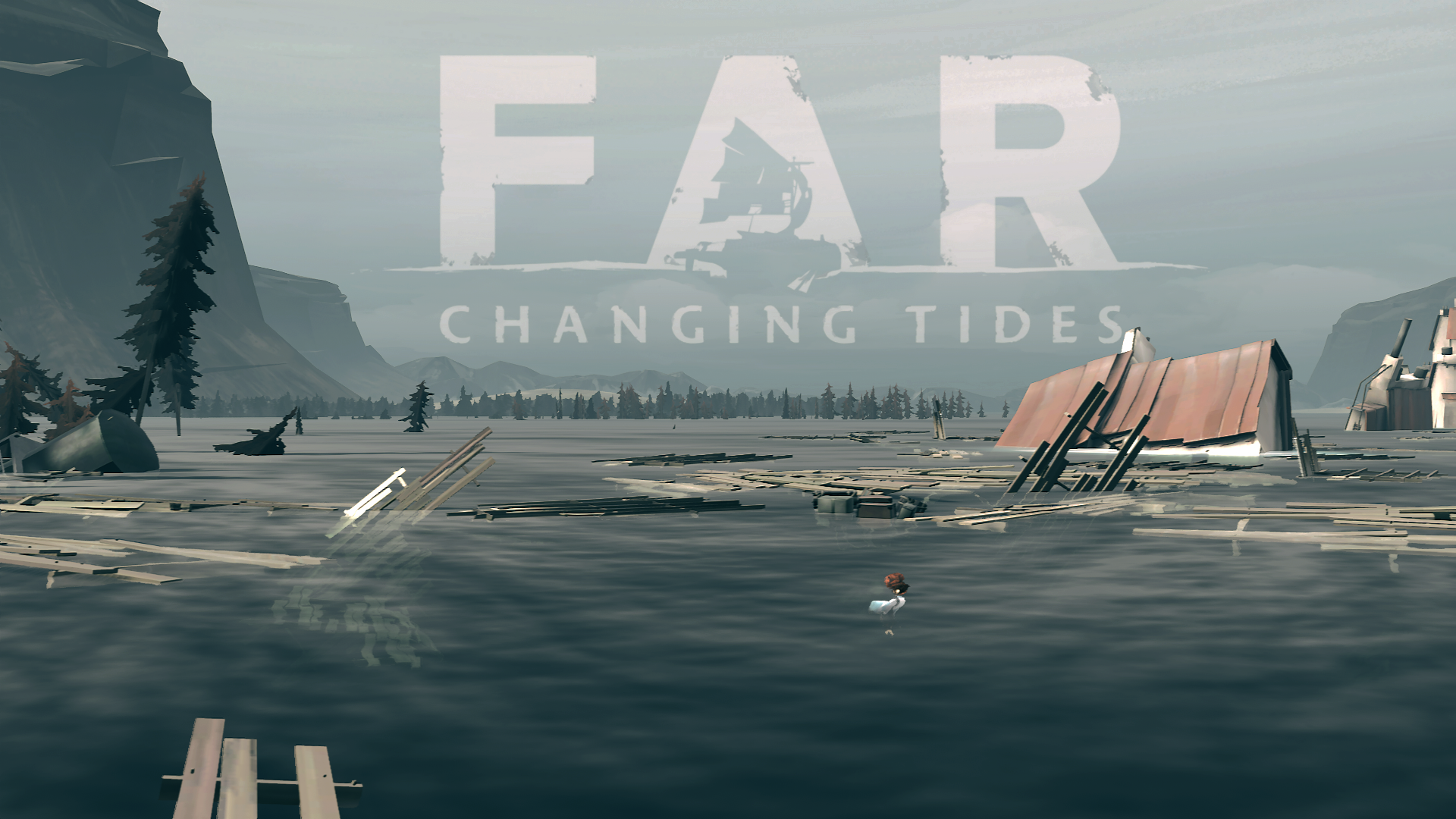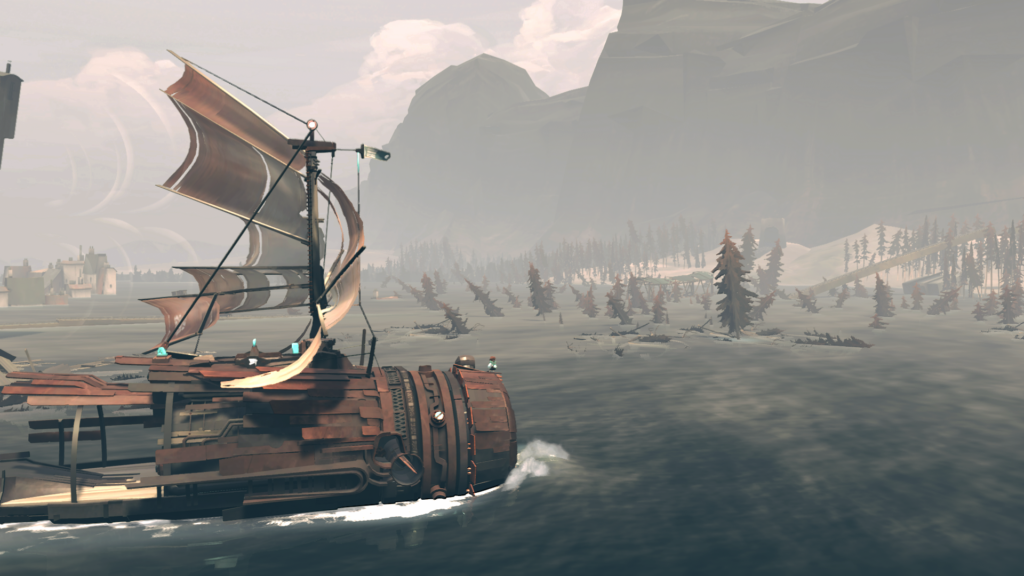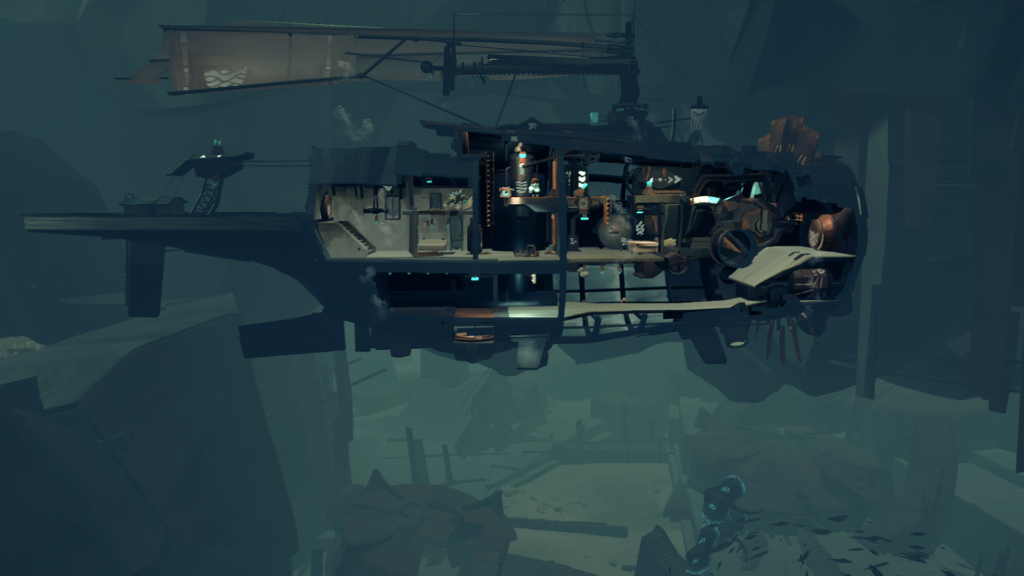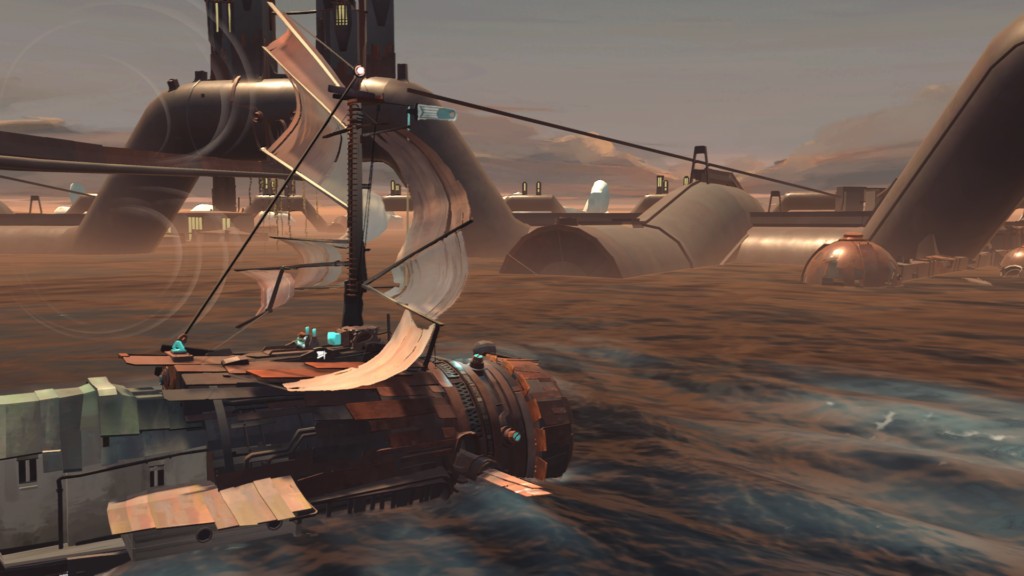
Platforms: Xbox Series X|S, PlayStation 5, Nintendo Switch, Xbox One (reviewed), PlayStation 4, Microsoft Windows
A few years back I stumbled on a video for a little game called FAR: Lone Sails. I instantly fell in love with its art style and knew if it ever released on consoles, it would be a must play for me. In 2019, it finally arrived on PlayStation 4. I bought it and it was one of my favorite games of that year. Fast forward to today and its sequel, FAR: Changing Tides, recently released and to say I was excited to experience it would be an understatement. So, now it’s time to find out if it can live up to its predecessor.

Changing Tides opens with a nameless, faceless character submerged in water. As they surface, it quickly becomes apparent that whatever was once here has been completely destroyed by a catastrophic flood. The opening minutes of Changing Tides gives off serious Inside and Little Nightmares vibes as your tiny character will be platforming through an eerily beautiful world. That is until you reach a large vessel on the water and set sail in search of a new home.
The game’s description calls it “an atmospheric vehicle adventure that follows the emotional journey of a boy and his ship as he embarks on a voyage to find a new home.” If you don’t happen to read that or pay attention to achievement descriptions, the story will largely be left up to interpretation as there are no cutscenes or dialogue. So, if you’re looking for a more story-driven experience, just know that the storytelling here is more subtle.

At its core, Changing Tides would probably be considered a puzzle platformer. Many times throughout the experience you’ll be tasked with using your platforming skills to solve puzzles when your ship’s way is blocked. The platforming controls aren’t the tightest, as your character feels a bit floaty, but this isn’t a super tough platformer, so that’s mostly forgivable. There are some sections where it can be a little frustrating because the precision of your jump isn’t great. I also found that the character would often be grabbing stuff I didn’t intend to or miss things I was aiming for, adding to the annoyance.
The puzzles in Changing Tides also aren’t that tough once you figure out the game’s mechanics. As some of the explanations are vague or even non-existent, deciphering exactly what the game wants from you is the most challenging aspect. For instance, I was able to easily solve a puzzle to add a new upgrade to my ship, but then I spent an embarrassing amount of time trying to figure out how to use it once I was back on board. Otherwise, it does a good job pointing you in the right direction.
When you’re not solving puzzles, you’ll be captaining your ship and this is where Changing Tides becomes more of a strategy or simulation type of game. As you travel the seas, you’ll have to make sure your vessel is running properly. This means working the sails (if there’s enough wind), making sure the vessel is properly fueled, keeping the engine cool, and a variety of other things. This aspect is pretty laid back when compared to other games, as there isn’t much penalty if things go a little haywire. It’s just nice to have a little something to do as you travel the open water because you’ll be doing that a lot.

Where I feel like Changing Tides really shines is in its visual presentation and use of sound. One look at any screenshot and it’s easy to see that this is a good-looking game. There are some absolutely gorgeous set pieces throughout. The game’s aesthetic won’t be for everyone, but I find its flooded world beautiful in its destruction. With the sound, most of the time you’ll be left with nothing more than the ambience of the environment, but there are some amazing moments when you’re sailing or solving a puzzle where the music will swell. This makes things feel far more epic than they otherwise would, and I loved it.
As beautiful as Changing Tides is, that isn’t enough to save it from one of my biggest issues with it – everything feels so formulaic. You sail for a while, something will block your way, you solve a puzzle to get moving again, and then you do it again. This structure isn’t inherently bad, but it just starts feeling a little boring after a while. To make matters worse, there are times when you’ll be able to captain your ship without needing to micromanage all of its functions, and some of these sections feel like they go on for far too long. I could only take in the view for so long before wishing I was actually doing something.
Changing Tides‘ predecessor, Lone Sails, had a similar structure, but it felt a lot more unique at the time. I hate to say it, but the sequel loses a bit of the charm that the first game had. Changing Tides is also nearly twice as long as Lone Sails, and I don’t think that does it any favors either. Clocking in at around 5 to 6 hours, it honestly feels longer than that because of all the idle time you have between some puzzles. Pair that with puzzles that all start feeling very similar, and I felt like Changing Tides wore out its welcome way before its end. There are some pretty cool moments late in the game, but getting to them is a bit of a slog at times.

Disappointment really is one of the cruelest feelings. I wanted to love FAR: Changing Tides, but there’s just too much that stood in the way of that happening for me. With the exception of its visual presentation, nothing about Changing Tides comes across as that special. It’s by no means a bad game and I’m sure there is an audience that will love it, but I just can’t give it my recommendation. If you have Game Pass you could certainly find worse games to play and really have nothing to lose with giving it a try. All that said, I would recommend its predecessor, FAR: Lone Sails, as it does what Changing Tides tries to do better, more succinctly, and with more charm.





